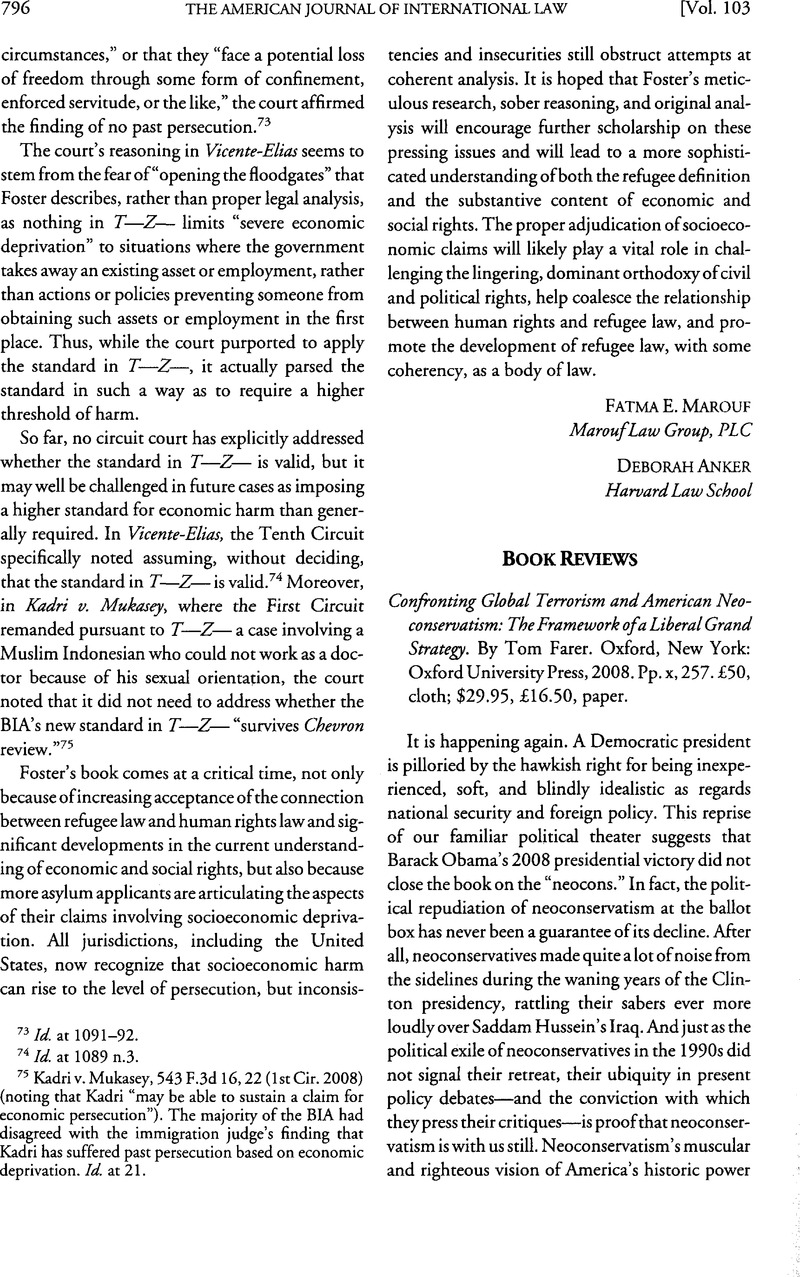No CrossRef data available.
Published online by Cambridge University Press: 27 February 2017

1 See, e.g., Mary, Ellen O’Connell, The Power and Purpose of International Law (2008)Google Scholar.
2 My own inexperience with research and commentary on Islamic terrorism renders me unable to say very much about Farer’s survey of that subject—except to note that fifteen pages of definitional material, much of which is given over to the British experience of decolonization in India, strikes me as selective and summary. I am somewhat more familiar with the literature concerned with the roots of, and contemporary debate over, neoconservative theory. Farer largely bases his definitional treatment of the school on contemporary commentary in the popular media. The reader looks in vain for a citation to Carl Schmitt or Leo Strauss or even Jeremy Rabkin. Sergio Dellavalle has written a more substantive, independent treatment of neoconservatism. See Sergio, Dellavalle, The Necessity of International Law Against the A–Normativity of Neo–conservative Thought, in Progress in International Law 95 (Russell, A. Miller & Rebecca, M. Bratspies eds., 2008)Google Scholar.
3 Jack, L. Goldsmith & Eric, A. Posner, The Limits of International Law (2005)Google Scholar; see also Detlev, Vagts, International Relations Looks at Customary International Law: A Traditionalist’s Defence, 15 Eur. J. Int’l L. 1031 (2004)Google Scholar; Andrew, T. Guzman, The Promise of International Law, 92 Va. L. Rev. 533 (2006)Google Scholar; Oona, A. Hathaway & Ariel, N. Lavinbuk, Rationalism and Revisionism in International Law, 119 Harv. L. Rev. 1404 (2006)Google Scholar; Aaken, Anne van, To Do Away with International Law? Some Limits to the “Limits of International Law,” 17 Eur. J. Int’l Law 289 (2006)Google Scholar; Berman, Paul Schiff, Seeing Beyond the Limits of International Law, 84 Tex. L. Rev. 1265 (2006)Google Scholar.
4 Ian, Brownlie, Principles Of Public International Law 57-58 (6th ed. 2003)Google Scholar (“It is states and organizations (if appropriate conditions exist) which represent the normal types of legal person on the international plane. . . . [And] it is as well to remember the primacy of states as subjects of law.”). But see Christoph, Schreuer, The Waning of the Sovereign State: Towards a New Paradigm for International Law, 4 Eur. J. Int’l L. 447, 453 (1993)Google Scholar.
5 See, e.g., Martti, Koskenniemi, The Gentle Clvilizer Of Nations 3, 98–178 (2002)Google Scholar; Antony, Anghie, Imperialism, Sovereignty And The Making of International Law 1–12 (2004)Google Scholar; James Anaya, S., Indigenous Peoples In International Law 3–7 (2004)Google Scholar.
6 See, e.g., David, Kennedy, The Dark Sides of Virtue (2004)Google Scholar; David, Kennedy, Of War and Law (2006)Google Scholar.
7 See Kennedy, of War and Law, supra note 6; Martti, Koskenniemi, From Apology to Utopia (Cambridge University Press 2005) (1989)Google Scholar.
8 See Jürgen, Habermas, Between Facts and NORMS (William, Rehg trans., 1998)Google Scholar.